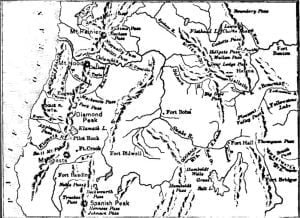Montana Towns and Pioneer Sketches, 1862-1864
Among these detained in Beaverhead Valley because wagons could not go through from Lemhi to Salmon River was a party of which John White and John McGavin were members. This company, about the 1st of August, 1862, discovered placers on Willard or Grasshopper Creek, where Bannack City was built in consequence, which yielded from five to fifteen dollars a day to the hand. White, who is usually accredited with the discovery, having done so much for his fame, has left us no other knowledge of him or his antecedents, save that he was murdered in December 1863. Almost at the … Read more






